Learn How To Get Stains Out Of Polyester Easily | 2024 Guide
Polyester is a synthetic fabric that is known for its durability, strength, and resistance to shrinking and wrinkling. However, like any fabric, polyester can become stained and can be difficult to clean.
The key to getting stains out of polyester is to act quickly and to use the right cleaning techniques and products. Before attempting to remove a stain from polyester, it is important to first identify the type of stain and then choose the appropriate cleaning method.
In general, mild detergents and warm water are effective for most stains on polyester, but tougher stains may require the use of specialized stain removers or other cleaning agents.
By following the right steps and using the right products, you can successfully remove stains from polyester and keep your clothing and other items looking their best.
So, Keeping in mind all of your needs here I come up with a detailed guide about it.
Is Polyester Stain Resistant?
Polyester is a man-made fabric that usually doesn’t wrinkle, shrink, or stain easily. However, it’s not invincible and there are certain stains it can’t prevent.
Some stains are more difficult to remove from polyester fabrics than others. Getting rid of tough stains requires specific methods of treatment.
How To Remove Stains From Polyester
Two substances that easily stain polyester are blood and food. If you address the spills quickly, you can often remove these stains with a single treatment using common household cleaners.
Tide says that one of the most critical steps to removing spots is washing them in cold water after you treat them.
If you wash a stained item in warm water, it will make the stain set in more. We’ll give you what you need and directions for each type of stain so it will be removed.
Blood Stains
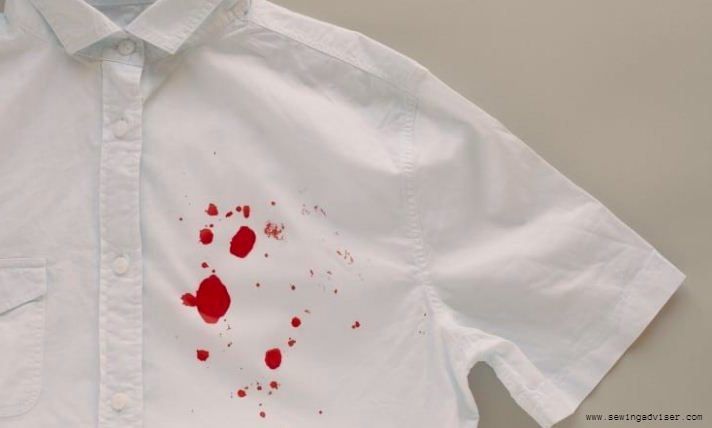
The following items are necessary to remove blood stains:
- A paper towel or other cloth
- A sink.
- Liquid dish soap
- Water
- Laundry Detergent
- Hydrogen peroxide
Get rid of any unwanted blood splatters following these simple steps for polyester fabrics.
If the blood has not yet dried, use a paper towel or cloth to blot the stain and remove any excess blood.
Fill the basin or sink with lukewarm water and mix in a small amount of soap.
Submerge the item in soapy water until it’s coated. If it tries to float to the surface, place a heavy object, like a towel, on top of it.
The soaking time will depend on the size of the stain, but it should be no less than 2 hours and no more than 3.
After the item has soaked, empty the old water and replace it with fresh water.
Use approximately 1/2 cup each of detergent and hydrogen peroxide in the water. Too much hydrogen peroxide can result in staining white polyester fabrics.
Soak the item in water overnight.
After you remove the item from the water, put it in the washing machine on a cold cycle.
Food Stains

The following items are necessary to remove food stains:
- A paper towel or cloth
- Spray bottle
- White vinegar
- Water
- Dish soap
Follow these steps to quickly and easily remove food stains from polyester clothing.
Rather than rubbing the stain, which would only serve to set it in more, blot it with a paper towel or cloth.
Combine water and white vinegar in the spray bottle in equal measure.
After adding soap to the spray bottle, give it a shake to mix everything.
Apply the mixture to the stained area and let it sit for three to five minutes.
Dab the stain with a clean cloth to remove the excess spray and the stain.
If the stain is fading, wash the item in your washing machine with cold water.
Fill your sink with water and add ½ cup of vinegar to make a natural stain remover. Leave the item to soak for a minimum of 30 minutes.
To wash the item, put it in the washing machine.
Related Article: Can You Spray Paint Fabric
Removing Oil-Based Stains From Polyester
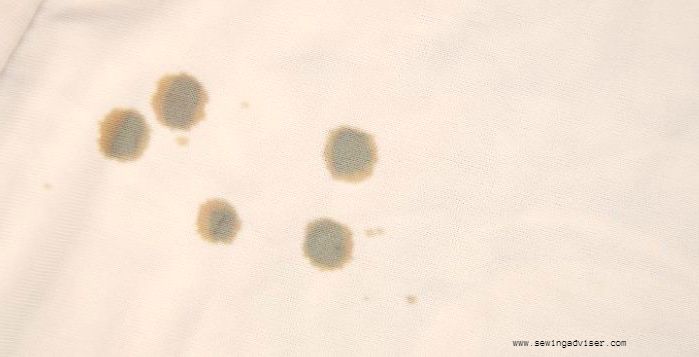
Oil-based stains are more complicated to get rid of because the polyester fibers absorb oil and oil doesn’t dissolve in water.
Some common examples of food that can leave behind these kinds of stains are grease and salad dressing, but other things could cause them as well. Oil-based stains can typically be found on:
- Butter
- Deodorant
- Gasoline
- Lotion/Makeup
- Mayonnaise
- Salad dressing
By no means is this an exhaustive list, but it will give you a better idea of which products to avoid if you don’t want oil stains.
To remove oil spots, you will need:
- White paper towels or cloth towels
- Baking soda
- Dish soap
- Borax
- hydrogen peroxide
- White vinegar
To remove stains, follow these steps:
The key to getting a stain out is acting fast. As soon as you notice it, lay the item on a flat surface.
To absorb any oil not adhered to the fibers, sprinkle baking soda on top of the stain.
After the baking soda has soaked up as much oil from your skin as it can, brush it off in the sink or trash can.
Pour some soap onto the stain, making sure to coat it evenly. The soap will help cleanse the oil. After 5-10 minutes have passed, the mixture will be ready.
Instead of rinsing the soap off, put it in the washing machine in a warm water setting.
To remove the stain, use your regular amount of laundry detergent. In addition, add a cup of borax or hydrogen peroxide to the washing machine.
To see if the stain has been removed, first, wash the item and let it air dry. If there’s still a mark, put it in the clothes dryer as this could help to set the stain.
If the stain is still visible, start the process over again.
Tip
There are numerous ways to get rid of fabric stains, but vinegar works for most. If you’d prefer not to use vinegar, there are plenty of commercial stain-fighting solutions available; just follow the product instructions. To remove sweat stains, make a paste with baking soda and vinegar.
Spread it over the stained area(s), wait an hour or two, then wash as usual. When dealing with ink stains, hairspray is still one of the best options but it’s not the hairspray that gets rid of the stain; it’s the rubbing alcohol in it.
Related Post: How To Wash Cotton Fabric Before Sewing
Vinegar to Remove Stains From Polyester
Vinegar is a washing agent and is much safer than chemicals or solvents for stain removal. It can help you get rid of any type of stain from your polyester clothing even the difficult ones like coffee, grass, tea, or fruit juice stains!
Stain Pre-Treatment
Step 1: Mix 1/3 white vinegar, 1/3 water, and 1/3 liquid dish detergent or heavy-duty laundry detergent in a plastic, flip-top bottle to create a pre-treatment solution for vinegar stains.
Step 2: To use this vinegar solution, start by squeezing it onto the stain. Next, rub the mixture into the fabric with your fingers until it’s saturated then let it sit for 5 to 10 minutes.
Step 3: If the vinegar solution doesn’t remove the polyester garment’s stain, repeat. If it does, wash and dry according to care tag instructions.
Large Stains
Step 1
Soak any large, badly stained polyester garments in a container that can hold a gallon of lukewarm water.
Step 2
For every 1/4 to 1/2 cup of water, add 1/4 cup of white vinegar and around 1/4 cup of liquid dish soap. Gently stir the ingredients together until combined.
Step 3
Soak your polyester garment for 10 to 15 minutes, rinse it off completely, then wash and dry it according to the care label.
Are Oil Stains Permanent?
The sooner you treat an oil stain on polyester, the easier it will be to remove. Stains that are treated immediately are less likely to become permanent and almost always come out with little effort.
What Does An Oil Stain Look Like?
Oil stains can be difficult to see, especially on dark clothing. You may not even realize the stain is there until it’s set in and much harder to remove.
Oil stains will usually adopt the color of whichever fabric they’re on and appear to be slightly darker than the material.
However, sometimes you can’t even see them until after the oil has dried. This is why it’s helpful to know what causes these stains so that you can remove them right away.
How Do You Remove Old Oil Stain from Polyester?
Over time, old oil stains become harder to remove because the fabric has had more time to absorb the stain. Although you may not be able to achieve complete removal of an old oil stain, these steps may help.
- Place the item on a flat surface.
- Use a cool, damp cloth to blot the stain.
- Pour some liquid soap onto the spot and massage it in. Allow the soap to remain on the stain for 15-20 minutes.
- To clean the item, machine-wash it with regular detergent and let it air dry.
- If the stain is still visible, repeat the steps.
How to Remove Grease Stains from Polyester
Most grease stains derive from greasy foods, and they’re not much different than oil stains. The sooner you act on them, the easier they are to remove for any fabric including polyester. You’ll only need a bar of dish soap that cuts through grease. Follow these steps to nix a grease stain:
As soon as you notice the stain, rinse it with cold water.
According to Dawn, 1 teaspoon of soap is more than enough to get the job Done.
Massage the soap into the dirty area to begin loosening the grime. Let it sit for approximately 5 minutes. If you’d like, you can rinse off the soap or let your washing machine do that step instead.
To clean a stained item, put it in the washing machine with some detergent. Be sure to set the water temperature to cool before starting the cycle.
If the stain disappears, launder the item as usual. If it’s still there, reapply for the treatment and check again later.
How to Remove Ballpoint Pen Ink From Polyester
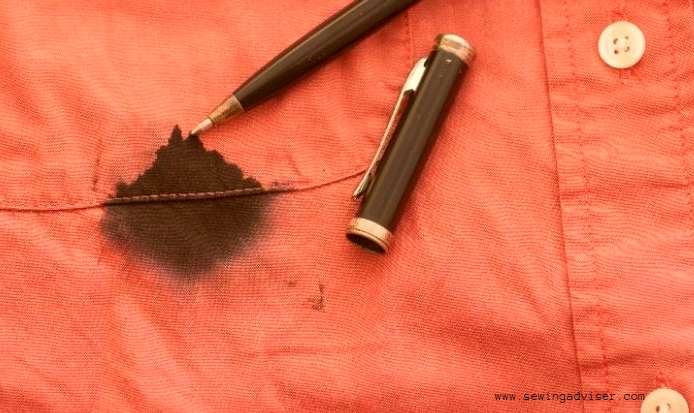
If you accidentally leave a pen in your pocket and it ends up in the washing machine, don’t panic! If you catch it early enough, use a paper towel to blot up as much ink as possible. To clean the stain, you require:
- Hairspray
- Dish soap
- White vinegar
- Water
If you want to know how to remove ink from polyester, just follow these simple steps:
- Apply hairspray to the affected area.
- Soak the stain in a solution of 1 tablespoon white vinegar, 1 teaspoon soap, and 4 cups water.
- Let the ink-stained garment soak for 30 minutes to an hour.
- Repeat the following steps until the stain disappears.
- Once the stain is removed, you can clean the item as normal.
How to Remove Yellow Stains From White Polyester
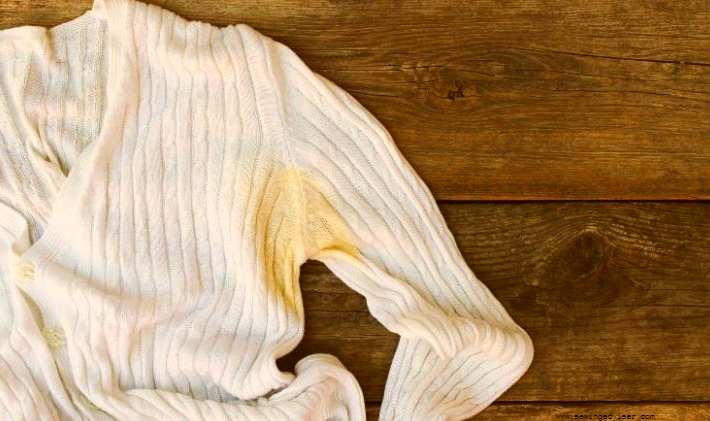
Polyester is a delicate fabric, but there are ways to remove yellow stains without harming them.
One method is using oxygen bleach instead of chlorine bleach. Oxygen bleach is less likely than chlorine bleach to damage the fabric or cause serious harm to you.
Here’s how to implement it:
Create a mixture of oxygen bleach and warm water, following the provided directions on the packaging.
Soak the item overnight in the solution.
Remove the item from the solution and wash it in the washing machine using warm water.
For the best results, add 1/2 cup of white vinegar to your next load during the rinse cycle.
You can dry your laundry in the sun or air to help keep it looking new.
To brighten your clothes, mix 1 cup of lemon juice with the washing machine. You could also follow the instructions on a bluing agent and add it to cold water before putting your items in to wash as normal.
How to Treat Chocolate Stains on Fabric
How to treat machine washables: First, soak the item in warm water with an enzyme-based product. If that doesn’t work, try using a prewash stain remover (Target) before laundering. And if the stain is still there after all of that, rewash the item with bleach that won’t damage the fabric.
How to treat non-washables: Soak a cotton ball in diluted white vinegar, then apply it to the stain. Flush the area with cool water from a squeeze bottle.
Removing Coffee or Tea Stains on Fabric
How to treat machine-washables: Submerge the stained clothing in cool water, then pretreat with a prewash stain remover, liquid laundry detergent, or a paste made from detergent and water. Wash the clothes using chlorine bleach if it is safe for the fabric; otherwise, use color-safe bleach (Target).
How to treat non-washables: Use an eyedropper to apply diluted white vinegar to the stain. Flush the area with cool water.
How to Remove Powdered Cosmetics From Clothing
How to treat machine washables: To remove the powder, lightly brush it off the garment. To pretreat the stain, use a stain remover or liquid laundry detergent. Launder uses the hottest water that is safe for the fabric.
How to treat non-washables: Gently remove any powder on the garment, then take it to a professional dry cleaner.
How to Remove Juice Stains on Fabric
How to treat machine washables: To remove the stain, soak the garment in cold water for 30 minutes. Then apply white vinegar to the area and let it sit for another 30 minutes. Finally, launder with bleach to finish removing the stain.
How to treat non-washables: Bring your clothes to a professional dry cleaner.
How to Remove Nail Polish From Clothes or Linens
How to treat machine-washables: To remove excess nail polish, scrape it off with a dull knife or spatula. Be careful not to spread the stain. If the stain persists, take it to a professional dry cleaner or place the stained area facedown on several layers of clean paper towels.
To remove the stain, put nail polish remover on a clean towel and place it over the back of the soiled area.
As the towel absorbs the polish, replace it with another clean one. Repeat this process until you see the stain begin to lift. Finally, rinse off any residual cleaner and launder as usual.
How to treat non-washables: Quickly remove any extra nail polish with a blunt knife or spatula. Be careful not to smear the polish as you scrape it off. Take your garment to a professional dry cleaner.
How to Remove Sweat Stains on Clothing
How to treat machine-washables: Ammonia is good for fresh stains and Vinegar works best on old ones; after you’re done, make sure to rinse it off. Use the hottest water possible for the specific fabric, or wash it with an enzyme product or color-safe bleach. (It’s never a good idea to mix ammonia and bleach.)
If you have a white shirt that’s been stained by sweat, mix baking soda, hydrogen peroxide, and water to form a paste.
Rub the mixture into the stain(s), let it sit for at least an hour, then launder as usual. Since hydrogen peroxide is a natural bleaching agent, this cleaning method should be used only on white articles of clothing.
How to treat non-washables: To use this method, mix diluted white vinegar with cool water using an eyedropper. Then, apply it to the stain and let it sit for a few minutes before flushing the area with more cool water.
How to Remove Red Wine Stains From Clothes and Linens
How to treat machine washables: To remove the stain, start by covering it with salt. Next, stretch the fabric over a bowl and pour boiling water onto the affected area. Launder as usual. If there is still evidence of the stain, apply diluted white vinegar with an eyedropper and flush with cool water before laundering again.
How to treat non-washables: Use a diluted solution of white vinegar and water on the stain, using an eyedropper to apply it. Flush the area with cool water.
Conclusion: How To Get Stains Out Of Polyester Easily
We hope you found this article helpful in teaching you how to get stains out of polyester. In conclusion, it is possible to remove stains from polyester fabrics with the right cleaning products and techniques.
Use a stain remover or a combination of dish soap and water to pre-treat the stain, and then wash the item according to the care instructions on the label. If the stain persists, you may need to use a stronger cleaning product or take the item to a professional cleaner.
With the right approach, you can successfully remove stains from polyester and keep your items looking clean and fresh.
If you enjoyed this article, please share it with others and leave a comment below.
FAQs: How To Get Stains Out Of Polyester Easily
Can I use bleaching detergents to remove set stains of polyester?
Polyester is a delicate fabric and using bleach to remove set stains will only damage the fabric further. It is never advisable to use bleach on polyester fabrics since they are synthetic; the Bleach will cause irreversible damage. The fiber in polyester does not react well with bleach, and using it will ruin the fabric. Always remember that bleach should never be used to remove stains; at best, it can only serve as a whitener.
Can I use hot water to remove stains when washing polyester?
You should use warm water instead of hot water on clothes, as long as you check the care label first. The care label will give you the maximum temperature that the clothing can be exposed to. Be safe and go for warm water instead of hot when trying to remove stains.
Can I use a softener when washing polyester garments?
Polyester is a popular fabric choice because it is stiff and durable. You can use a fabric softener when you wash polyester to help relax the fabric and make it more comfortable.
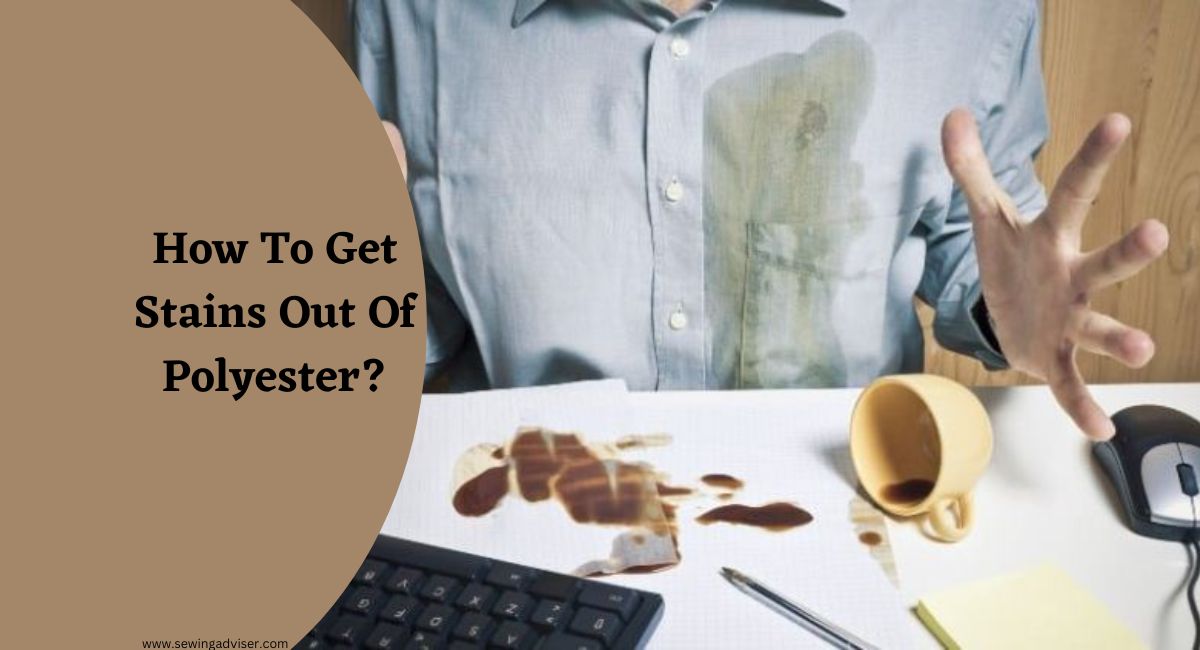





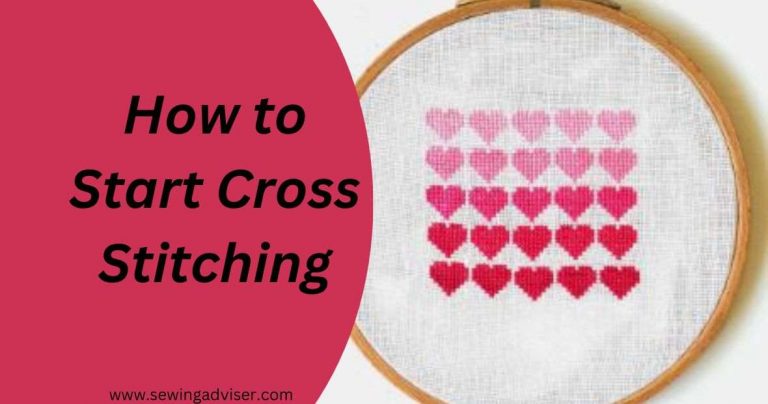
3 Comments